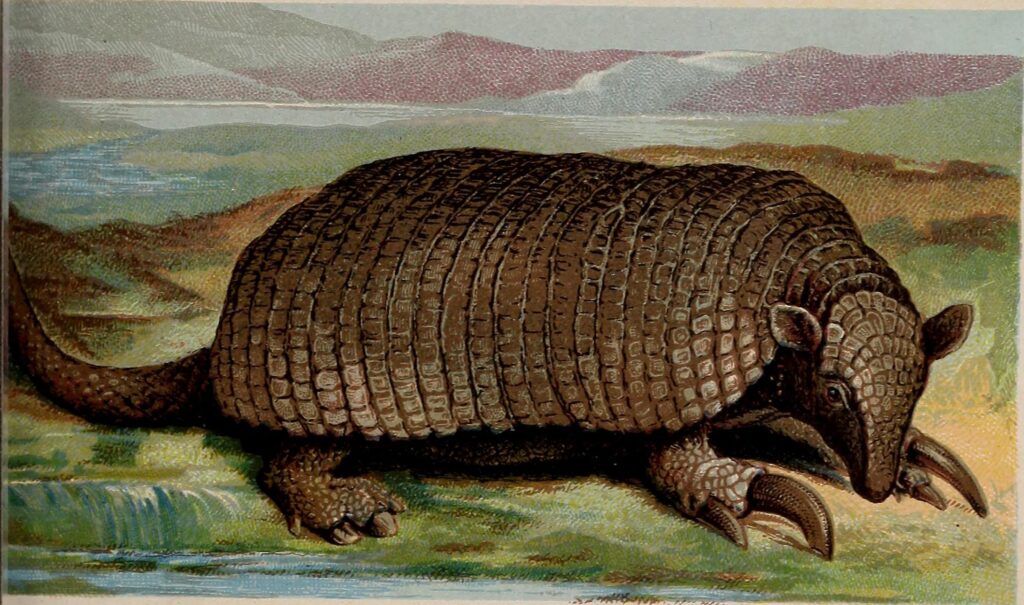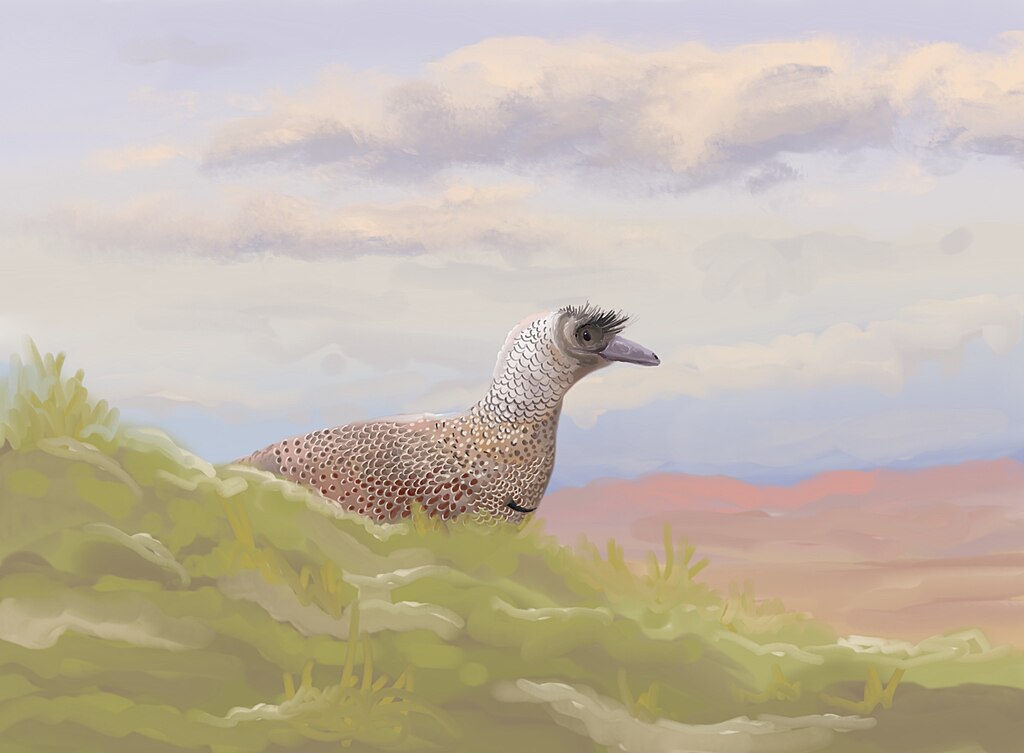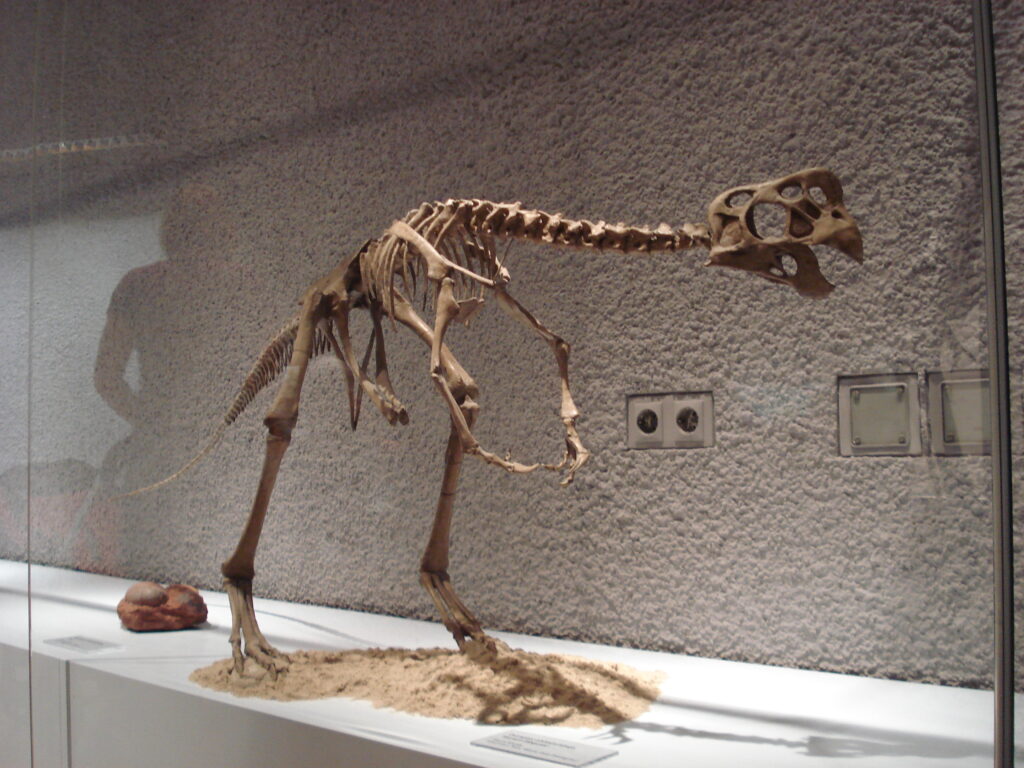The story of dinosaurs begins not with the titans that often capture our imagination, but with small, agile creatures scurrying through the landscapes of the Triassic period. When we think of dinosaurs, images of towering Brachiosaurus or fearsome Tyrannosaurus rex typically come to mind. However, dinosaurs didn’t start out as the giants of the Jurassic and Cretaceous periods. Their beginnings were far more humble, with the earliest dinosaurs being relatively small animals that emerged during the Triassic period, roughly 230-240 million years ago. These pioneering species tell us a fascinating story about evolution, adaptation, and the rise of one of Earth’s most successful animal groups. By examining these early dinosaurs, paleontologists have pieced together the puzzle of dinosaur origins, revealing surprising insights about how these creatures first evolved and eventually came to dominate terrestrial ecosystems for over 160 million years.
The Triassic: A World of Opportunity

The Triassic period (252-201 million years ago) presented a unique evolutionary opportunity for many animal groups. Following the devastating Permian-Triassic extinction event that wiped out approximately 90% of marine species and 70% of terrestrial vertebrates, the planet’s ecosystems were essentially reset. This mass extinction, often called “The Great Dying,” created ecological vacancies that allowed survivors to diversify into new niches. The early Triassic landscape was dominated by various reptile groups including archosaurs (the group that would eventually include dinosaurs, pterosaurs, and crocodilians), therapsids (mammal ancestors), and numerous other reptilian lineages. The climate was generally hot and dry, with seasonal monsoons in some regions, creating challenging conditions that would favor adaptable, efficient organisms. It was in this world of opportunity and challenge that the first dinosaurs began to emerge, starting as minor players but developing adaptations that would eventually lead to their dominance.
Defining the First Dinosaurs

Identifying the first true dinosaurs requires understanding what makes a dinosaur a dinosaur. Paleontologists define dinosaurs through several distinctive anatomical features rather than size or appearance. Key dinosaurian characteristics include an upright stance with legs positioned directly beneath the body (unlike the sprawling posture of many reptiles), a perforate acetabulum (a hole in the hip socket), and various skull and vertebral specializations. These adaptations created more efficient movement and better oxygen utilization, giving early dinosaurs advantages in locomotion and endurance. The earliest creatures that meet these criteria appeared during the Middle to Late Triassic period, roughly 230-240 million years ago. These animals were generally small—most were under 2 meters in length, with many species being considerably smaller, about the size of modern turkeys or dogs. This modest beginning stands in stark contrast to the gigantism that would later characterize many dinosaur lineages during the Jurassic and Cretaceous periods.
Eoraptor: A Window into Early Dinosaur Evolution
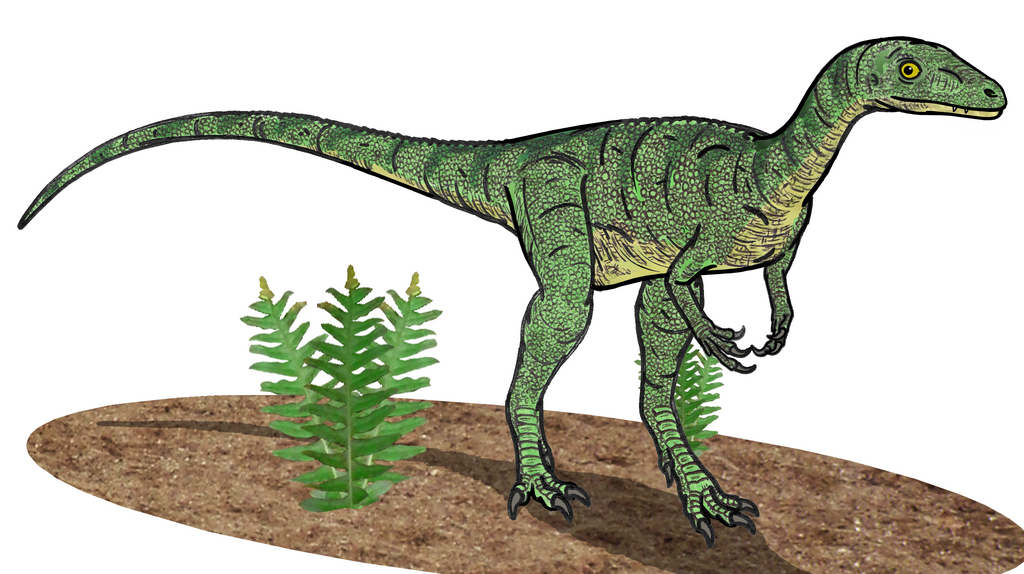
Discovered in Argentina’s Ischigualasto Formation, Eoraptor lunensis represents one of our best windows into early dinosaur evolution. Dating to approximately 231 million years ago, this small predator measured only about 1 meter (3 feet) in length and weighed around 10 kilograms (22 pounds)—roughly the size of a medium dog. Eoraptor possessed a fascinating mix of primitive and derived features that illustrate its transitional position in dinosaur evolution. Its hands retained five digits (unlike the reduced hand structure of later theropods), and its teeth showed a combination of both sharp, serrated edges for meat-eating and leaf-shaped teeth more typical of plant-eaters, suggesting an omnivorous diet. Importantly, Eoraptor exhibited the distinctive hip structure and upright posture characteristic of true dinosaurs. The discovery of Eoraptor in 1991 revolutionized our understanding of early dinosaur evolution, showing that the earliest members of the group were small, agile predator-omnivores rather than specialized hunters or herbivores, and that they initially evolved in what is now South America during the Late Triassic.
Herrerasaurus: A Primitive Predator

Herrerasaurus ischigualastensis represents another crucial piece of the early dinosaur puzzle, discovered in the same Argentine formation as Eoraptor but showing a more specialized predatory adaptation. Living approximately 231-228 million years ago, Herrerasaurus was significantly larger than Eoraptor, reaching lengths of 3-6 meters (10-20 feet) and weighing up to 350 kilograms (770 pounds). This carnivore’s anatomy has sparked considerable debate among paleontologists regarding its exact position in the dinosaur family tree. Herrerasaurus possessed a mix of primitive features alongside more advanced dinosaurian characteristics, including a partially flexible joint in its lower jaw that enhanced its predatory capabilities, and a distinctive pelvis structure that places it as either a very early theropod or a dinosaur precursor. Its powerful jaws, filled with serrated, blade-like teeth, and large claws on its hands made it an effective hunter of the smaller reptiles and proto-mammals that shared its environment. The existence of such a specialized predator so early in dinosaur evolution demonstrates how quickly these animals began to diversify and specialize after their initial appearance.
Pisanosaurus: The Earliest Ornithischian?

The story of early dinosaur diversity becomes even more complex with Pisanosaurus mertii, a small, bipedal herbivore from the Late Triassic of Argentina dating to approximately 228-216 million years ago. For decades, Pisanosaurus has been considered one of the earliest representatives of the Ornithischia—the “bird-hipped” dinosaur group that would later include famous herbivores like Triceratops, Stegosaurus, and Ankylosaurus. Measuring only about 1 meter (3 feet) in length, this diminutive creature showed adaptations for plant-eating, including a horny beak-like structure and leaf-shaped teeth suitable for processing vegetation. However, recent studies have called its ornithischian status into question, with some researchers suggesting it might be a silesaurid (a group of dinosauromorphs closely related to true dinosaurs) or another type of dinosauriform reptile. The debate surrounding Pisanosaurus highlights the challenges in identifying the earliest members of major dinosaur lineages and understanding the initial diversification of dinosaurs. Regardless of its exact classification, Pisanosaurus demonstrates that small, herbivorous dinosaur-like reptiles were diversifying alongside the early predatory forms during the Triassic period.
The Diminutive Origins of Giants

The small stature of early dinosaurs stands in striking contrast to the gigantism that would later characterize many dinosaur groups. The largest known Triassic dinosaurs were modest by later standards, with most species measuring less than 3-4 meters in length. This relatively small size likely reflects the ecological context of their origins, as dinosaurs initially competed with numerous other reptile groups that dominated Triassic ecosystems. The evolutionary pathway from these modest beginnings to the giants of the Jurassic and Cretaceous involved significant anatomical innovations. Early sauropodomorphs like Plateosaurus demonstrated the beginnings of the body plan that would eventually produce 30-meter titans like Argentinosaurus. Similarly, early theropods like Coelophysis established the bipedal, carnivorous blueprint that would later scale up to produce massive predators like Tyrannosaurus. The small size of early dinosaurs also offers insights into their physiological evolution, suggesting that the high metabolic rates and possibly warm-blooded physiology characteristic of dinosaurs may have evolved in small-bodied ancestors before the evolution of gigantism. This pattern of starting small and later diversifying into larger forms appears to be a common evolutionary trajectory across many dinosaur lineages.
Coelophysis: Success at Small Scale
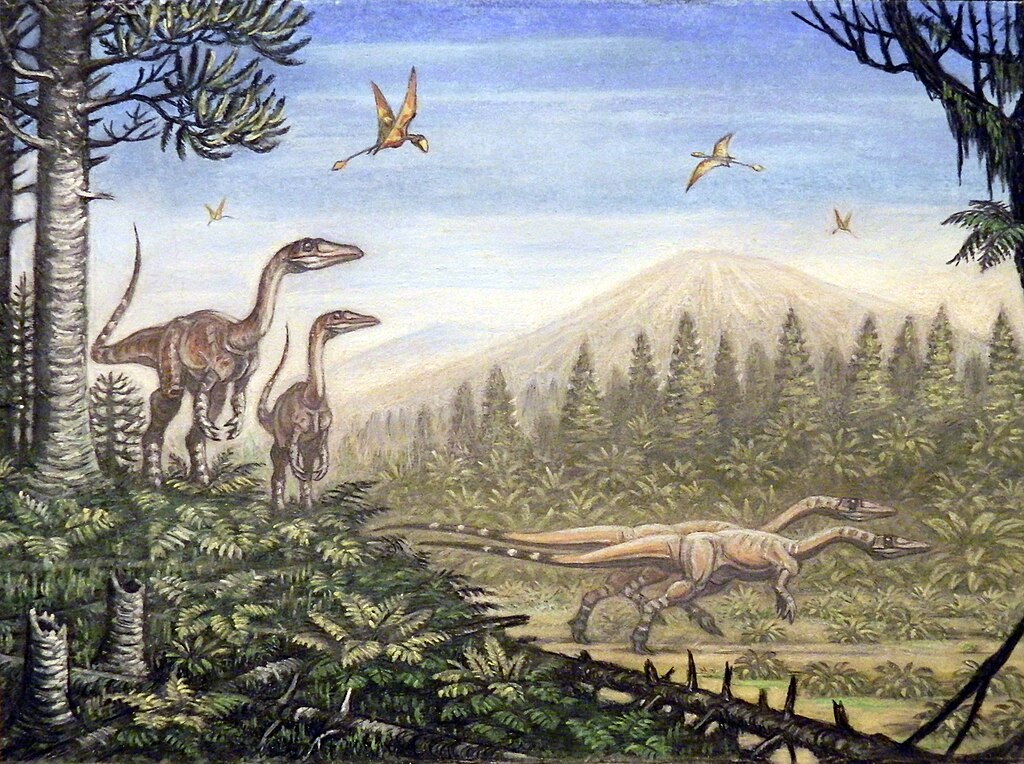
Coelophysis bauri represents one of the most successful early dinosaur species, emerging in the Late Triassic around 215 million years ago and persisting into the Early Jurassic. This slender theropod dinosaur measured approximately 3 meters (10 feet) in length but weighed only about 15-20 kilograms (33-44 pounds), with a lightweight build adapted for speed and agility. Coelophysis is known from hundreds of specimens discovered at Ghost Ranch, New Mexico, providing exceptional insight into its anatomy and population structure. This abundance of fossils suggests Coelophysis lived in groups and may have been one of the more common dinosaurs of its time. Its long neck, lightweight hollow bones, and serrated teeth adapted it perfectly for hunting small prey, while its slender limbs and balanced posture made it an efficient runner. Previously thought to have been cannibalistic based on specimens that appeared to contain juvenile remains in their stomach cavities, recent research has challenged this interpretation. Coelophysis demonstrates that even before the rise of giant dinosaurs, these animals had evolved highly successful adaptations at a relatively small size, allowing them to thrive in Late Triassic ecosystems.
Plateosaurus: Early Steps Toward Gigantism
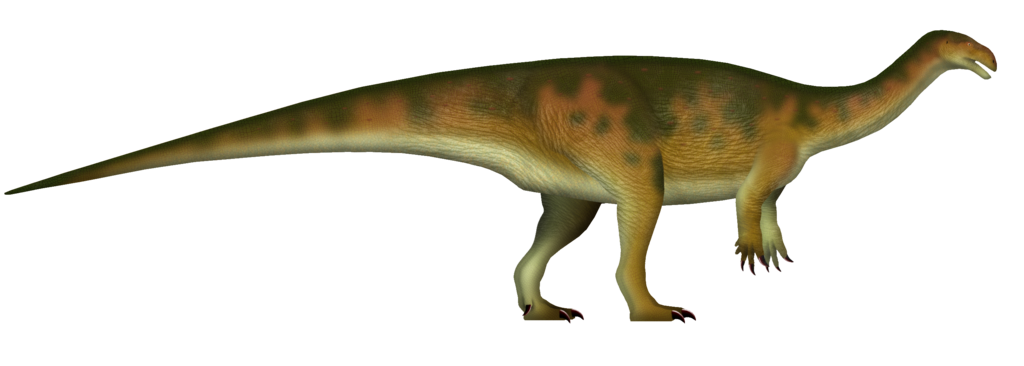
Plateosaurus engelhardti stands as one of the first dinosaurs to show a trend toward the larger body sizes that would later characterize many dinosaur groups. Living during the Late Triassic period (approximately 214-204 million years ago), this early sauropodomorph reached lengths of 5-10 meters (16-33 feet) and weights of up to 1,000 kilograms (2,200 pounds)—significantly larger than most contemporaneous dinosaurs. Plateosaurus represents an evolutionary intermediate between smaller bipedal ancestors and the truly gigantic quadrupedal sauropods of the Jurassic and Cretaceous. While capable of moving on two legs, Plateosaurus could likely also use its forelimbs for locomotion when necessary. Its long neck and specialized teeth adapted it for a herbivorous lifestyle, allowing it to browse on vegetation at different heights. Hundreds of Plateosaurus specimens have been recovered from Germany, France, and Switzerland, revealing details about its growth patterns and population variation. Interestingly, studies of Plateosaurus bones indicate that individuals grew at different rates depending on environmental conditions, showing an intermediate growth strategy between typical reptiles and later dinosaurs. This early sauropodomorph demonstrates how dinosaurs were beginning to exploit herbivorous niches and increase in size even during the Triassic period.
Dinosauromorphs: The Precursors
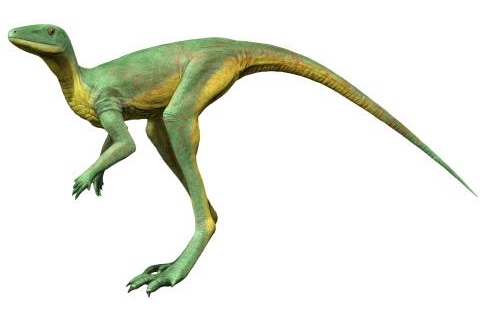
Understanding early dinosaur evolution requires examining their immediate predecessors and close relatives—the dinosauromorphs. These animals shared many anatomical features with true dinosaurs but lacked some of the defining characteristics of the group. Lagerpeton, Marasuchus, and Lagosuchus represent some of the earliest known dinosauromorphs, dating from the Middle Triassic period (approximately 245-235 million years ago), predating the first true dinosaurs by several million years. These small, bipedal reptiles typically measured less than a meter in length and exhibited increasingly upright postures and limb adaptations that foreshadowed dinosaurian locomotion. Silesaurids, a group of dinosauromorphs that includes Silesaurus from Poland and Asilisaurus from Tanzania, came even closer to true dinosaur anatomy. These quadrupedal herbivores lived alongside early dinosaurs and shared many features with them, though they retained some primitive characteristics in their hip structure. The existence of diverse dinosauromorphs throughout the Middle and Late Triassic demonstrates that the anatomical features that would eventually define dinosaurs evolved gradually, with different dinosaurian characteristics appearing incrementally over millions of years before the first true dinosaurs emerged.
The Evolutionary Advantages of Early Dinosaurs

The success of early dinosaurs raises an important evolutionary question: what advantages did these small reptiles possess that allowed them to eventually outcompete other animal groups? Several key adaptations likely contributed to their evolutionary success. The upright, parasagittal gait of dinosaurs—with limbs positioned directly beneath the body rather than splayed to the sides—created more efficient locomotion and reduced energy expenditure during movement. Evidence suggests that early dinosaurs may have possessed elevated metabolic rates compared to other reptiles, potentially allowing for sustained activity and better temperature regulation. Pneumatic features in dinosaur bones—air spaces similar to those in bird skeletons—lightened their skeleton while maintaining strength, creating better weight-to-strength ratios. Additionally, dinosaurs evolved a sophisticated respiratory system with air sacs similar to those of modern birds, potentially enabling more efficient oxygen extraction. These physiological and anatomical advantages wouldn’t have made dinosaurs immediately dominant; indeed, dinosaurs remained relatively minor components of terrestrial ecosystems throughout much of the Triassic. However, these adaptations positioned them to survive the End-Triassic extinction event and subsequently diversify into the dominant terrestrial vertebrates of the Mesozoic Era.
Geographic Distribution: Where Did Dinosaurs First Appear?

The geographic origin of dinosaurs has been a subject of intense paleontological debate, with evidence pointing strongly toward South America as the most likely cradle of dinosaur evolution. The oldest known definitive dinosaur fossils come from the Ischigualasto and Santa Maria formations of Argentina and Brazil, dating to approximately 231-233 million years ago. During the Triassic period, these regions were part of the supercontinent Pangaea, specifically within the southern landmass known as Gondwana. The concentration of early dinosaur fossils and dinosauromorphs in these South American formations suggests this region was a center of early dinosaur evolution and diversification. However, the picture is complicated by discoveries of similarly aged dinosauromorphs and possible early dinosaurs from Tanzania, Poland, and other regions, indicating that dinosaur precursors were widespread across Pangaea. The timing of dinosaur dispersal across the supercontinent remains uncertain, though current evidence suggests dinosaurs originated in what is now South America and spread relatively quickly across Pangaea before the supercontinent began breaking apart in the Late Triassic and Early Jurassic. The continuous landmass of Pangaea would have facilitated this dispersal, allowing early dinosaurs to expand their range across global ecosystems.
Triassic Ecosystems: Dinosaurs Among Giants

Despite their eventual dominance, early dinosaurs were relatively minor components of Triassic ecosystems, where they competed with and lived alongside a diverse array of reptilian groups. During this period, terrestrial environments were dominated by various archosaurs, particularly pseudosuchians (crocodile-line archosaurs) like rauisuchians, aetosaurs, and phytosaurs. Many of these non-dinosaurian reptiles were apex predators and reached larger sizes than contemporaneous dinosaurs. Massive amphibians, specialized reptiles like the herbivorous rhynchosaurs and dicynodonts, and early mammal relatives also shared these ecosystems with the first dinosaurs. Postosuchus, a large predatory rauisuchian, occupied top predator niches in many Late Triassic environments, while armored herbivores like Desmatosuchus filled roles similar to those later dominated by ankylosaurs. Flying pterosaurs had also begun to appear, competing with early avian-line dinosaurs for aerial niches. In this complex ecological landscape, early dinosaurs appeared to be opportunistic, with their diversity and abundance generally increasing through the Late Triassic. The End-Triassic extinction event, approximately 201 million years ago, dramatically altered this balance by eliminating many competing reptile groups, creating ecological opportunities that dinosaurs were well-positioned to exploit as they moved into the Jurassic period.
Modern Technologies Revealing Ancient Origins
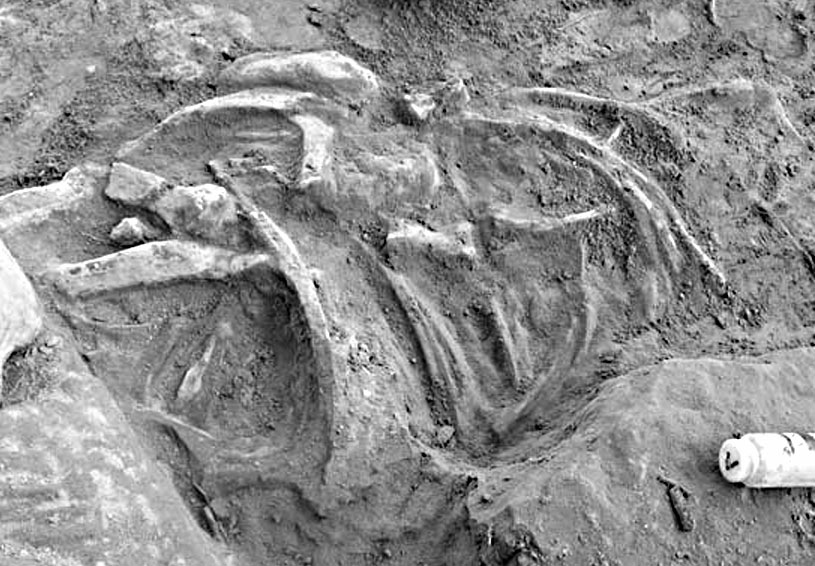
Advancements in scientific methodologies have revolutionized our understanding of early dinosaur evolution in recent decades. Computed tomography (CT) scanning allows paleontologists to examine the internal structures of fossils without damaging them, revealing details about brain cases, inner ears, and other anatomical features that provide insights into sensory capabilities and behaviors of early dinosaurs. Sophisticated phylogenetic analysis methods have helped clarify the relationships between early dinosaurs and their close relatives, refining our understanding of when key dinosaurian features evolved. Advances in geochemical dating techniques, particularly the refinement of radiometric dating methods, have produced more precise ages for important fossil-bearing formations, creating a clearer timeline of early dinosaur evolution.

